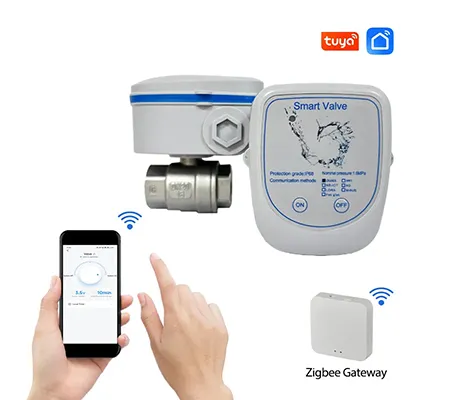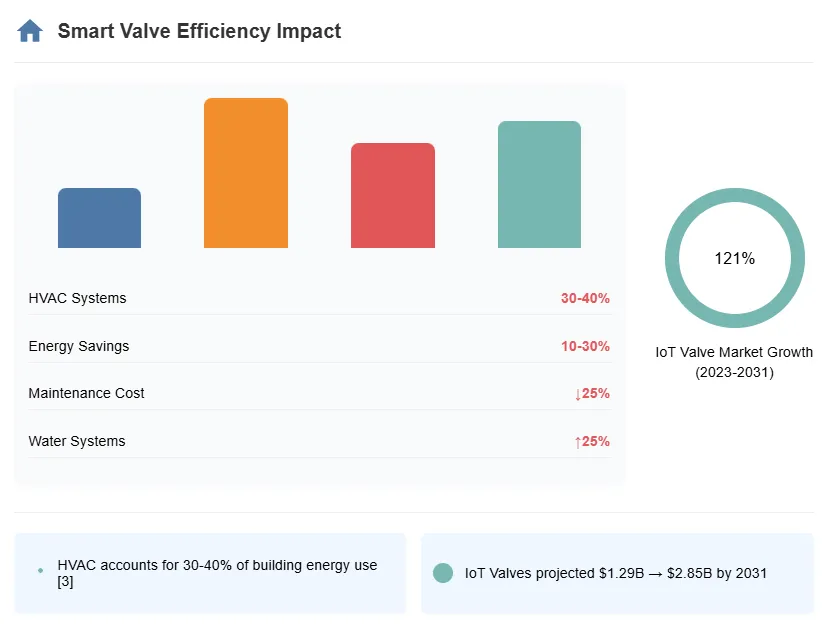Avoid your inquiry is delay response, please enter your WhatsApp/WeChat/Skype along with the message, so we can contact you at the very first time
We will reply you within 24 hours. If for urgent case, please add WhatsApp: +8613188899036, or WeChat: 0531-87968777. Or call 0531-87968777 directly.
* We respect your confidentiality and all information are protected. We will only use your information to respond to your inquiry and will never send unsolicited emails or promotional messages.
The Hidden Problem Draining Your Energy Costs
Do you know that buildings are responsible for as much as 40% of global carbon emissions, with HVAC systems significantly contributing to those emissions in commercial buildings — producing anywhere from 40 to 60% of a building’s total energy use? Most facility managers face a silent crisis: traditional valves waste enormous amounts of energy through poor flow control, pressure imbalances, and manual operation inefficiencies.
The global industrial valves market is driven by escalating demand across sectors such as oil & gas, water & wastewater treatment, power generation, and chemical processing, yet many systems still rely on outdated manual valve technology that fails to optimize performance.
The Costly Consequences of Outdated Valve Systems
Energy waste from traditional valve systems creates massive financial drains. The adoption of the Industrial Internet of Things (IoT) enables real-time monitoring, predictive maintenance, and automation, optimizing valve performance and operational safety, yet many facilities continue using inefficient manual controls.
Consider these real-world impacts:
The financial impact grows daily. Without smart valve technology, your facility operates at reduced efficiency while energy costs continue rising.
Smart Valve Technology: The Scientific Solution
Smart valves use IoT technology to enable efficient control, monitoring, and automation of valve operations. These advanced systems integrate embedded sensors, actuators, and control algorithms for autonomous regulation.
Key components include:

what are samrt valves
The IoT Valve Market is projected to expand from US$ 1.29 billion in 2023 to US$ 2.85 billion by 2031, reflecting a robust CAGR of 10.4%. This explosive growth reflects industrial recognition of smart valve efficiency benefits.
The Industrial segment held the largest share in the IoT Valves Market in 2023, with ball valve segments holding the largest share due to versatility across applications.
Automatic valves are projected to register the highest CAGR of 4.7% between 2025 and 2035, fueled by the global industrial shift toward automation, smart manufacturing, and Industry 4.0 practices.
Smart valve implementation in HVAC systems produces significant energy reductions:
Pressure Independent Control Valves (PICVs) can reduce operational energy costs by 20% or more by eliminating waste and optimizing flow. These systems provide:
Research demonstrates impressive efficiency gains:
| Industry Sector | Smart Valve Application | Energy Savings | Key Benefits |
| Manufacturing | Chemical process control | 21% energy reduction [1] | Zero leakage, corrosion resistance |
| HVAC Buildings | Flow regulation systems | 20-30% cost reduction [14-1] | Automated temperature control |
| Water Management | Distribution networks | Up to 25% efficiency gain | Leak detection, pressure optimization |
| Oil & Gas | Pipeline control systems | Predictive maintenance savings | Remote monitoring capabilities |
Municipal water supply systems can leverage IoT valves to monitor and control water distribution networks, detect leaks and shut off affected sections to prevent water loss, and optimize water pressure in different areas based on usage patterns.

The wired segment held a larger IoT valve market share in 2023, offering reliable connections through standard Ethernet cables providing both power and data transmission.
Popular connectivity protocols:
Advanced smart valves integrate multiple technologies:
With 8,000 tons annual valve production capacity and five efficient production lines, Navarch demonstrates manufacturing scale necessary for large-scale smart valve deployment. The company’s strategic transportation hub location enables rapid response to customer needs.
Navarch’s experienced technical team focuses on research, development, and manufacturing with strict quality control standards including multiple rigorous tests before delivery. This ensures reliable smart valve performance in demanding industrial applications.
The company’s complete system integration and energy-saving technology services align perfectly with smart valve implementation requirements, offering customers comprehensive solutions beyond basic valve production.
Smart valves can transmit real-time data to centralized systems, enabling predictive maintenance and reducing the risk of operational downtime. This includes:
The integration of artificial intelligence and machine learning algorithms further enhances the capabilities of these smart valves, allowing for predictive analytics and autonomous operation.
Asia-Pacific accounted for the largest revenue share of 35.8% and is expected to witness the fastest growth, driven by rapid industrialization, infrastructural development, and growing emphasis on energy efficiency.
According to Indian Infrastructure reports, as of April 5, 2024, 645 smart energy projects worth US$ 1,675.0 million have been completed, with 38 projects worth US$ 85.3 million in progress in India.
Smart valve installations provide measurable financial returns:
Older manual control valves don’t need to be removed or replaced—they can be left in place and set to be fully open, with newly installed PIBCVs automatically adjusting the flow, with no need to shut down and drain the entire system.
The trend towards smart valves aligns with the broader movement towards Industry 4.0, emphasizing automation and data exchange in manufacturing technologies. As industries prioritise efficiency and reliability, the demand for intelligent valve solutions is expected to rise.
Smart valve systems enable digital twin creation for:
Leading companies developing smart valve solutions include:
For comprehensive smart valve solutions , Navarch offers complete system integration combining valve manufacturing with energy-saving technology services.
Quality smart valve manufacturing requires adherence to:
Navarch’s strict quality control standards with multiple rigorous tests before delivery ensure compliance with these critical industrial specifications.
Smart valve technology represents a fundamental shift from reactive to predictive industrial control systems. With the global industrial valve market valued at USD 84.97 billion in 2025 and poised to expand to USD 128.22 billion by 2035, early adopters gain competitive advantages through:
The integration of intelligent valve systems with advanced water management solutions creates comprehensive efficiency improvements across industrial applications.
Facilities implementing smart valve technology today position themselves for long-term operational success while immediately reducing energy costs and environmental impact. The combination of proven energy savings, predictive maintenance benefits, and automated control optimization makes smart valve investment a strategic necessity rather than optional upgrade.
For industrial facilities seeking intelligent energy-saving solutions, smart valve technology provides measurable returns while supporting sustainability objectives and operational excellence goals.